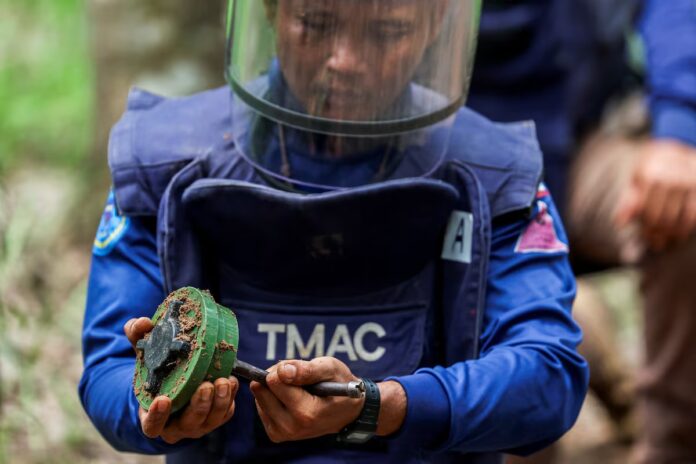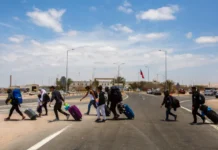
The landmines that triggered deadly clashes between Thailand and Cambodia in July were likely newly planted, according to multiple independent landmine experts consulted by Reuters.
The discovery has intensified tensions between the two Southeast Asian neighbours and raised fresh questions about adherence to international landmine treaties.
The confrontation began on July 16, when Thai Army Second Lieutenant Baramee Sricha and his patrol were on routine duty near a disputed section of the border. One soldier stepped on a PMN-2 anti-personnel mine, a Soviet-era device that exploded and severed Sricha’s ankle.
The incident sparked five days of cross-border hostilities, which ended with a U.S.-brokered ceasefire, but not before injuring several Thai soldiers and igniting a diplomatic dispute over the origin of the mines.
Thailand accused Cambodia of laying new PMN-2 mines along parts of the border, claiming that at least six of its soldiers had been maimed since July. Cambodia denied the charge, insisting that the explosives were remnants of its civil war era, when millions of mines were planted during decades of conflict that ended in the 1990s.
However, four independent experts who analyzed photos and videos of the recovered mines told Reuters the ordnance appeared recently laid.
“The mines I was shown had no dirt accumulation or brittleness that you would expect from older PMN-2s,” said Andrew Vian Smith, a U.K.-based mine specialist. “They looked like they had been in the ground for no more than a few months.”
Yeshua Moser-Puangsuwan of Landmine Monitor, part of the International Campaign to Ban Landmines, said the mines’ pristine condition and lack of vegetation cover suggest recent placement. “Flooding might move an old mine but would not make it look new,” he noted.
The Cambodia Mine Action and Victim Assistance Authority (CMAA) rejected the conclusions, saying environmental factors such as soil erosion or flooding could make older ordnance appear newer.
CMAA’s First Vice President Ly Thuch added that a determination could only be made after an impartial third-party investigation, stressing that Cambodia’s military no longer holds stockpiles of live anti-personnel mines.
Thailand’s military shared photographs, videos, and shrapnel evidence from two border incidents, on July 16 and July 23, which it said confirmed the presence of PMN-2 mines.
Reuters verified the metadata on several of the images, showing they were captured between July 18 and 23, coinciding with Thai demining operations, though the precise locations could not be independently confirmed.
Cambodia maintains that the explosion on July 16 was not caused by a PMN-2, suggesting instead that the mine could have been of American, Chinese, or Vietnamese origin.
The dispute has strained bilateral relations and put Cambodia under scrutiny for a possible violation of the Ottawa Convention, which bans the use and stockpiling of anti-personnel mines. Both countries are signatories to the treaty.
Thailand has since filed a formal complaint under the convention’s compliance mechanism and asked UN Secretary-General António Guterres to press Phnom Penh for a response.
“The Secretary-General hopes that Thailand and Cambodia will achieve a cooperative resolution,” said UN deputy spokesperson Farhan Haq, reaffirming the UN’s support for dialogue.
Since 1991, Cambodia has spent over $1 billion, with international assistance, on demining its heavily contaminated territory.
More than 3,200 square kilometres of land have been cleared, and over 1,800 PMN-2 mines have been neutralized since September 2023.
If confirmed, the new use of PMN-2 mines would mark a serious reversal of Cambodia’s decades-long commitment to eliminating the weapon, which has already claimed tens of thousands of lives since 1979.
As both countries trade accusations, experts warn that renewed mine deployment in the border zone risks undermining three decades of demining progress and destabilizing a region still haunted by its violent past.
Source: Reuters
Written By Rodney Mbua


















